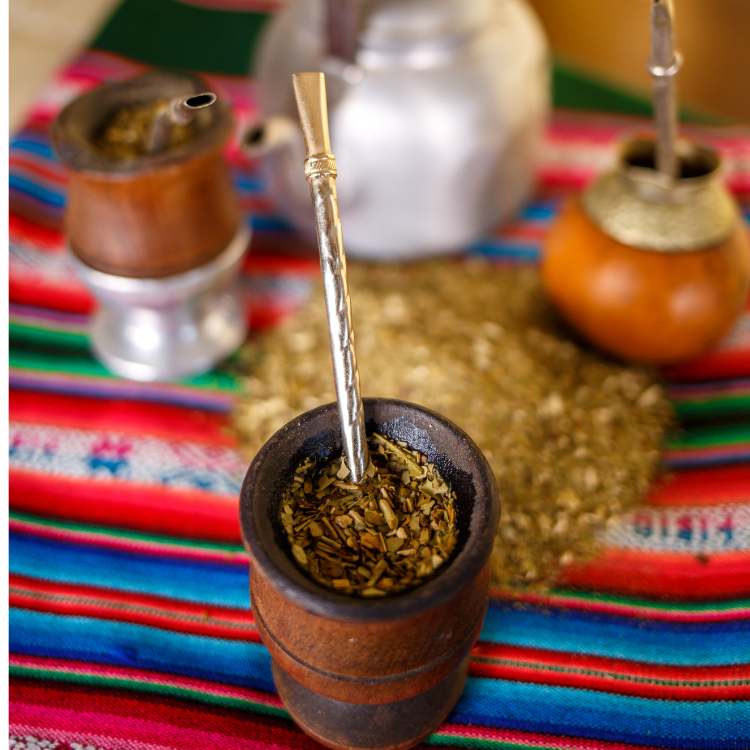
A little-known superhero called Yerba Mate lurks in a world inundated with quinoa dishes and kale smoothies. No, it isn't the disguise of an Argentine superhero or the newest dance routine trending on TikTok, it’s a common South American herb that is not very well understood, for if it was, there would be a worldwide shortage! So put down your cup of coffee and let's explore the metabolic wonders of yerba mate so you can understand what you’ve been missing out on.
Yerba What
If you've been living under a rock your entire life, you might not be familiar with Yerba Mate, which happens to come from the leaves of a tree called Ilex paraguariensis, a species native to South America. Yerba Mate leaves are dried, chopped, and ground to produce a beverage called mate (pronounced "mah-teh"). Imagine if coffee and green tea had a lovechild. That’s yerba mate for you, a caffeinated drink that’s more sophisticated than your usual java, and according to studies, a lot healthier for you.
The star-studded roster of Yerba Mate’s primary active ingredients include xanthine alkaloids or xanthines (caffeine-like substances), including theobromine, and theophylline, as well as polyphenols (think of them as the bodyguards for your cells)[1]. Compared to coffee, Yerba Mate gives you that wake-up punch, but without the jittery side effects. It’s like coffee’s chill cousin who's been on a meditation retreat.
Brain Adrenaline
Picture your brain as a dance floor. Enter norepinephrine, or as I like to call it, the DJ of focus, motivation and if you’re a Austin Powers fan, Schwing! When norepinephrine drops the beat, our neurons start grooving, leading to better clarity and drive. The actives in Yerba Mate, especially the xanthines, amplify norepinephrine’s mixes, ensuring that your brain rave never stops[2]. So, next time you consume real Yerba Mate, imagine a brain disco ignited by a focused and motivated DJ!
Burn Baby Burn
When it comes to burning your pesky body fat, think of Yerba Mate as your personal trainer – only it’s in a cup or a pill, and its way cheaper. The actives in this magical plant amp up your metabolism. They're like the cheerleaders encouraging your body to break down fat and use it as fuel. This means you’re torching those calories, even when you're just lounging (though, maybe not as much as when you're twerking)[3].
Yerba Mate is able to aid in fat loss in the following 3 ways:
- The xanthines found in yerba mate, can stimulate lipolysis, which is the breakdown of stored fat into free fatty acids and glycerol. This process makes fatty acids available in the bloodstream to be used as an energy source. The xanthines achieve this by inhibiting an enzyme called phosphodiesterase, which in turn elevates a cellular protein called cAMP. cAMP in turn activates protein kinase A, which in turn activates hormone-sensitive lipase, the enzyme responsible for breaking down fats[4].
- The Xanthines increase energy expenditure by promoting thermogenesis, which is the production of extra heat in the body. This process burns calories and contributes to weight loss, and despite the exact mechanism of this effect not being entirely understood, it’s believed to be due to an increase in the metabolic rate[5].
- Studies suggest that xanthines can help to suppress appetite, which could lead to a reduced calorie intake[6]. If your appetite as that over-enthusiastic friend who always wants to order pizza at 2 am, Yerba Mate is the voice of reason, gently telling that friend, "Maybe not today."
How To Select a Primo Yerba Mate
- Origin Matters: Just like wine, the region of cultivation affects the quality. Look for brands that source from traditional regions like Argentina, Brazil, or Paraguay.
- Go Organic: Opt for organic yerba mate to avoid pesky pesticides.
- Mind the Age: Fresher isn't always better. Aged yerba mate has a richer flavor, so check the harvest date.
- Avoid Flavors and Additives: Pure yerba mate has a unique taste. If you find a product mixed with a ton of flavors, it might be masking inferior quality[7].
- If You’d Rather Take Capsules: Capsules can offer a concentrated form of the active ingredients, ensuring you get a standard dose without the multiple refills, however make sure there are no additives like titanium dioxide or magnesium stearate.
In conclusion, Yerba Mate is the life of the metabolic party. So, next time you're looking for an energy boost, fat-burning companion, or just a tasty brew, you know what to reach for!
References:


